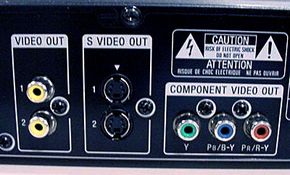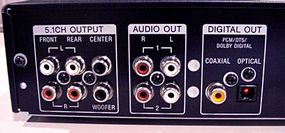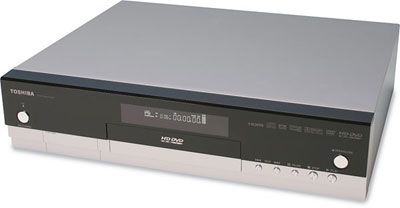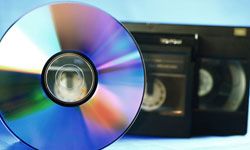The DVD drive consists of three fundamental components:
- A drive motor to spin the disc - The drive motor is precisely controlled to rotate between 200 and 500 rpm, depending on which track is being read.
- A laser and a lens system to focus in on the bumps and read them - The light from this laser has a smaller wavelength (640 nanometers) than the light from the laser in a CD player (780 nanometers), which allows the DVD laser to focus on the smaller DVD pits.
- A tracking mechanism that can move the laser assembly so the laser beam can follow the spiral track - The tracking system has to be able to move the laser at micron resolutions.
Inside the DVD player, there is a good bit of computer technology involved in forming the data into understandable data blocks, and sending them either to the DAC, in the case of audio or video data, or directly to another component in digital format, in the case of digital video or data.
To work properly, the DVD player must focus the laser on the track of bumps. The laser can focus either on the semi-transparent reflective material behind the closest layer, or, in the case of a double-layer disc, through this layer and onto the reflective material behind the inner layer. The laser beam passes through the polycarbonate layer, bounces off the reflective layer behind it and hits an opto-electronic device, which detects changes in light. The bumps reflect light differently than the "lands," the flat areas of the disc, and the opto-electronic sensor detects that change in reflectivity. The electronics in the drive interpret the changes in reflectivity in order to read the bits that make up the bytes.
The hardest part of reading a DVD is keeping the laser beam centered on the data track. This centering is the job of the tracking system. As the DVD is played, the tracking system has to move the laser continually outward. As the laser moves outward from the center of the disc, the bumps move past the laser at an increasing speed. This happens because the linear, or tangential, speed of the bumps is equal to the radius times the speed at which the disc is revolving. So, as the laser moves outward, the spindle motor must slow the spinning of the DVD so that the bumps travel past the laser at a constant speed, and the data comes off the disc at a constant rate.
An interesting thing to note is that if a DVD has a second layer, the start of that layer's data track can be at the outside of the disc instead of the inside. This allows the player to transition quickly from one layer to the next, without a delay in data output, because it doesn't have to move the laser back to the center of the disc to read the next layer.





